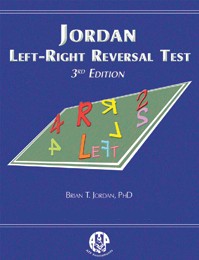Jordan Left-Right Reversal Test (JLRRT-3)
Complete Kit (also known as the JORDAN-3)
- Ages 5 - 18 years
- Testing Time 20-30 minutes
- Administration Individual / Group
-
Product Code 8564-5 ( MR #053913 )
* Qualifications required to purchase this item. Click here to complete the qualifications form.
Price $144.00
Contents
-
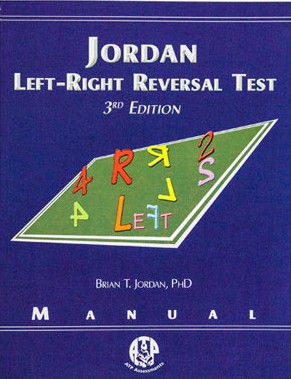
Jordan Left-Right Reversal Test (JLRRT-3)
JLRRT-3 Manual
$55.00 -
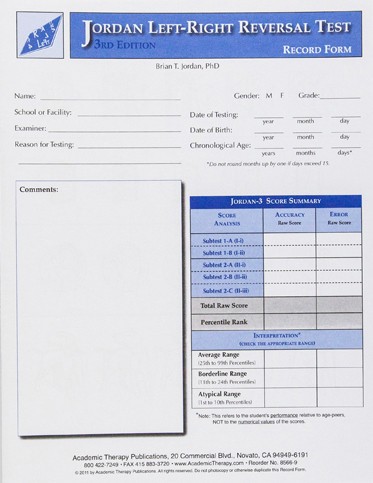
Jordan Left-Right Reversal Test (JLRRT-3)
JLRRT-3 Record Forms (25)
(also known as JORDAN-3 Record Forms)
$45.00 -
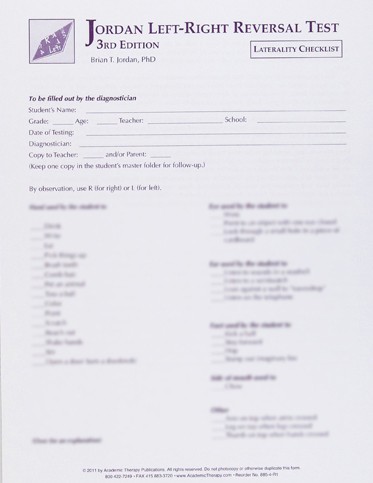
Jordan Left-Right Reversal Test (JLRRT-3)
JLRRT-3 Laterality Checklists (25)
$26.40 -
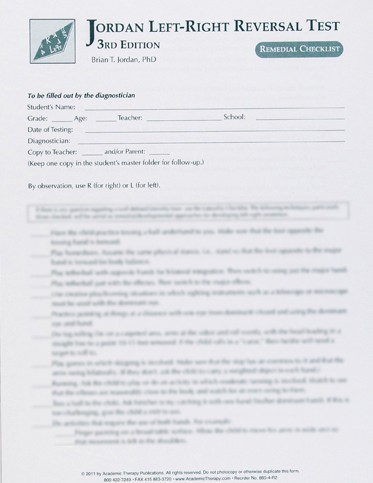
Jordan Left-Right Reversal Test (JLRRT-3)
JLRRT-3 Remedial Checklists (25)
$26.40
- Subtest 1-A (new) presents line drawings; the student indicates which are reversed
- Subtest 1-B presents letters and numbers; the student identifies reversals
- Subtest 2-A presents words; the student indicates which letters are reversed
- Subtest 2-B shows 20 sentences; the student indicates reversed words (saw vs. was)
- Subtest 2-C (new) presents two columns of letter sequences; the student compares them and identifies which letters in the second column are out of sequence
-

Jordan Left-Right Reversal Test (JLRRT-3)
JLRRT-3 Laterality Checklists (25)
$26.40 -

Jordan Left-Right Reversal Test (JLRRT-3)
JLRRT-3 Manual
$55.00 -

Jordan Left-Right Reversal Test (JLRRT-3)
JLRRT-3 Record Forms (25)
(also known as JORDAN-3 Record Forms)
$45.00 -

Jordan Left-Right Reversal Test (JLRRT-3)
JLRRT-3 Remedial Checklists (25)
$26.40
- Copyright 2011

 Proud to be Canadian
Proud to be Canadian